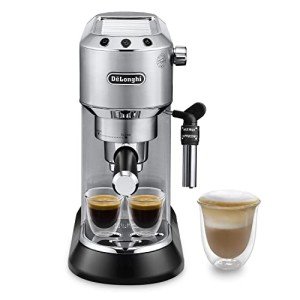Understanding Dual Boiler Espresso Machines: A Comprehensive Guide
Espresso is an art as much as it is a science. For coffee enthusiasts and baristas alike, accomplishing the best shot of espresso demands precision and control over developing variables. One of the most efficient ways to achieve this accuracy is through using dual boiler espresso machines. This short article explores the functionality, benefits, and considerations of dual boiler espresso machines for both novices and skilled coffee aficionados.
What is a Dual Boiler Espresso Machine?
A dual boiler espresso machine features 2 separate boilers: one for brewing espresso and the other for steaming milk. This design allows the user to brew coffee and steam milk concurrently, accomplishing optimum temperature control for both processes. This is vital for developing lattes, cappuccinos, and macchiatos, where both active ingredients are important.
Table 1: Key Components of Dual Boiler Espresso Machines
| Component | Function |
|---|---|
| Espresso Boiler | Heats up water to the ideal developing temperature (around 190 ° F) |
| . Steam Boiler | Warms water to a greater temperature (around 250 ° F) for steaming milk. |
| PID Controller | Manages the temperature of the boilers for accuracy brewing. |
| Group Head | Where the coffee grounds sit and hot water goes through. |
| Steam Wand | Provides steam to froth milk. |
Benefits of Dual Boiler Espresso Machines
1. Simultaneous Brewing and Steaming
The most substantial benefit of dual boiler espresso machines is the capability to brew espresso and steam milk at the same time. This effectiveness is especially advantageous in busy environments, such as coffee shops, where speed and quality are critical.
2. Consistent Temperature Control
Dual boiler machines frequently feature sophisticated PID (Proportional Integral Derivative) controllers that keep a consistent temperature level throughout the developing process. Consistency is important in espresso making to ensure the best extraction, therefore enhancing taste and aroma.
3. Customization and Versatility
With two different boilers, users can personalize the temperature level settings for both espresso developing and milk steaming. This suggests various kinds of coffee, such as lighter or darker roasts, can be prepared perfectly to match private taste profiles.
4. Suitable for Advanced Techniques
For those interested in latte art or other sophisticated techniques, a dual boiler espresso machine provides the flexibility to deal with numerous milk textures while also drawing out espresso. Energy-Efficient Espresso Machines makes it an attractive alternative for baristas who want to sharpen their abilities.
5. Durability and Durability
Many dual boiler machines are developed with high-quality materials designed for longevity. They are frequently made of stainless steel and feature durable elements, making them a beneficial investment for anybody severe about coffee.
Drawbacks of Dual Boiler Espresso Machines
In spite of their numerous advantages, dual boiler machines can have some disadvantages:
- Higher Cost: Dual boiler machines tend to be costlier than their single-boiler equivalents, which may not be ideal for casual coffee drinkers.
- Size and Space: These machines might inhabit more counter top area than others, making them less ideal for little kitchens.
Table 2: Key Considerations When Choosing a Dual Boiler Espresso Machine
| Factor to consider | Description |
|---|---|
| Budget | Dual boiler machines can range from ₤ 1,000 to over ₤ 4,000. |
| Size | Inspect your kitchen area space before acquiring. |
| Brand name Reputation | Try to find well-reviewed brands with great consumer support. |
| Features | Consider what functions are important (e.g., PID controller, volumetric choices). |
| Maintenance | Some machines may require more routine upkeep than others. |
Frequently asked questions
1. Are dual boiler espresso machines worth the investment?
Yes, they are worth the financial investment for major coffee lovers or professional baristas who value accuracy in espresso extraction and milk steaming.
2. How do I maintain a dual boiler espresso machine?
Regular maintenance includes descaling the machine, cleaning up the group head, and ensuring that the steam wand is devoid of milk residue. Speak with the producer's manual for specific standards.
3. Can High-Quality Espresso Machines use a dual boiler espresso machine for other brewing methods?
Normally, dual boiler machines are designed generally for espresso. Nevertheless, they can generally brew quality drip coffee and other styles with the best settings and adjustments.
4. What brands are understood for their dual boiler machines?
Some trustworthy brand names include La Spaziale, Breville, and ECM. Each brand has its own special features and prices.
5. What is the average lifespan of a dual boiler espresso machine?
With appropriate care and upkeep, a dual boiler machine can last over a decade, making it a long-lasting investment for coffee lovers.
Dual boiler espresso machines represent the apex of espresso-making innovation, combining art and science into one compact gadget. While they require a greater initial financial investment and more countertop area, the advantages they use-- such as simultaneous brewing and steaming, accurate temperature control, and toughness-- make them perfect for severe coffee enthusiasts. Understanding the workings, benefits, and factors to consider for these machines will enable consumers to make educated choices and elevate their coffee developing experience. Whether at home or in a hectic café, a dual boiler machine can truly boost the art of espresso.

